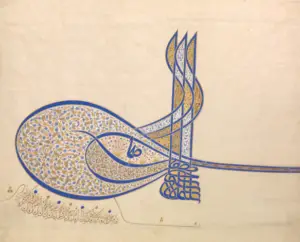
Ottoman Empire Flag – Tughra
The Ottoman Empire, a vast and influential empire, lasted for six centuries, leaving a significant mark on world history. It lasted from about 1299 until 1922, ending with the establishment of the Turkish Republic.
Throughout its existence, the empire expanded over large parts of Europe, Asia, and Africa and played a crucial role in cultural and political developments.
You will be intrigued by the expansive history of the Ottoman Empire and will find insights into its rise to power and eventual decline.
The empire’s complex history encompasses significant events such as the conquest of Constantinople and participation in World War I. These elements reflect the empire’s enduring influence on regional and global affairs.
Exploring the Ottoman Empire offers a journey through time, unveiling the powerful empire’s impact on shaping modern nations and cultures.
Examining key events and innovative governance can help one appreciate the profound legacy left by the Ottomans across diverse regions.
This article will delve into these fascinating historical dimensions and provide a comprehensive overview of the empire’s lasting significance.
Overview of the Ottoman Empire
The Ottoman Empire dominated world history, controlling vast regions across Europe, Asia, and Africa. The Empire’s roots in the 13th century significantly impacted religion, culture, and trade.
What Was the Ottoman Empire?
The Ottoman Empire, known in its early years as the Ottoman Turkish Empire, began around the late 13th century. Founded by Osman I, it expanded rapidly, becoming one of the world’s most powerful empires. This Islamic-run entity was notable for its administrative skill and military strength.
The empire’s heart was in modern-day Turkey, with its capital in Constantinople, now Istanbul. By the 16th century, it ruled parts of Southeast Europe, Western Asia, and North Africa.
From a cultural standpoint, the empire was crucial in spreading Islamic culture throughout these regions.
It became a hub of art, science, and education, influencing its territories and beyond. The Ottoman Empire map during its height shows an extensive reach, illustrating its role as a central power broker between the East and West.
The Ottoman Period and Its Significance
The Ottoman period marked a time of significant political and social evolution. Known for its imperial system, the Ottomans maintained control through a centralized government led by the sultan.
They incorporated numerous diverse peoples and cultures into the empire, fostering a unique multicultural environment.
This period also witnessed major infrastructure development, including roads, mosques, and schools, facilitating cultural exchange.
Economically, the empire played a key role in Eurasian trade networks, especially the spice and silk trades.
This economic prowess was fueled by strategic control of trade routes crossing Europe and Asia. The empire’s diversity provided a wealth of knowledge and cultural resources that fortified its global influence.
The Rise of the Ottoman Kingdom
The rise of the Ottoman Kingdom is a testament to its strategic military conquests and diplomatic maneuvers.
Under leaders like Osman I and later Suleiman the Magnificent, the empire experienced tremendous growth.
The capture of Constantinople in 1453 was one of the empire’s defining moments, marking the end of the Byzantine Empire.
This victory solidified its power and positioned it as a formidable force in European and Asian politics.
Throughout history, the empire was led by a series of sultans who expanded its territories and strengthened its governance.
Each sultan contributed to the empire’s legacy, helping it evolve into a flourishing dynasty that lasted until the early 20th century. The Ottoman dynasty played a crucial role in this expansion and consolidation.
Timeline of the Ottoman Empire
The Ottoman Empire had a vast history, spanning centuries and influencing many regions. It began in the late 13th century, grew significantly across Europe, Asia, and Africa, and concluded in the early 20th century.
When Did the Ottoman Empire Start?
The Ottoman Empire was founded in 1299 by Osman I, a leader of the Turkish tribes in Anatolia. This newly formed Ottoman dynasty played a crucial role in its rise.
During the late 13th century, the Ottomans gradually expanded their territory from a small principality to a burgeoning empire.
Under Osman I’s leadership, the Ottomans increasingly gained power, establishing a stronghold as the foundation for their future expansion.
Strategic conquests in Asia Minor defined Osman’s reign. As a result, the empire’s early years were marked by military victories, allowing the Ottomans to secure key regions.
Over time, this expansion laid the groundwork for a more structured administration that would govern the vast lands of the Ottoman period.
The growth under Osman I and his successors helped shape the early identity and strength of what would become a major world power.
Major Events in the Ottoman Empire Timeline
The history of the Ottoman Empire includes numerous significant events. In 1453, the Ottomans, led by Sultan Mehmed II, captured Constantinople. This marked the fall of the Byzantine Empire and Constantinople’s transformation into Istanbul, a central hub for the empire.
This expansion allowed for increased influence in both Europe and Asia.
Another key moment was the reign of Suleiman the Magnificent during the 16th century. Under his rule, the empire peaked in terms of military, political, and economic power.
Throughout the 17th and 18th centuries, the empire faced military defeats and administrative difficulties.
Despite the setbacks, the Ottomans continued to be a dominant force in regional politics.
The empire’s involvement in World War I was a pivotal moment that led to drastic changes, shaping modern-day borders in the Middle East and Europe.
When Did the Ottoman Empire End?
The end of the Ottoman Empire came with its defeat in World War I and subsequent dissolution in 1923.
The fall of the Ottoman Empire marked the conclusion of centuries of rule.
Following the war, the Allies partitioned the empire, resulting in the loss of significant territories. The Republic of Turkey was established, ending the reign of the Ottoman sultans.
This dramatic shift in power and governance brought about new national boundaries.
The disintegration of the Ottoman era not only impacted the Ottoman Empire map but also led to the emergence of several modern nation-states that were once part of the empire’s vast territories.
The transition from empire to nation-state marked a significant turning point in the region’s history.
Geography and Expansion
The Ottoman Empire was one of history’s largest and most powerful empires. It expanded across three continents, influencing various cultures and societies. Its strategic location facilitated control over key trade routes.
Where Was the Ottoman Empire Located?
The empire spanned parts of Europe, Asia, and Africa. Its core regions included modern-day Turkey, the Balkans, and parts of the Middle East.
During the height of the Ottoman era, the empire stretched from the Persian Gulf in the east to the borders of Austria in the west. In North Africa, it controlled territories like Egypt and Libya.
This diverse geographical spread gave the empire significant control over important waterways and trade routes, making it a key player in regional and international affairs.
Ottoman Empire Map and Territories
At its peak, the Ottoman Empire’s map illustrated vast territories. It controlled significant parts of Southeastern Europe and the Middle East.
The Ottoman Empire map included regions like Greece, Bulgaria, and much of the Arabian Peninsula.
According to Khan Academy, the empire’s reach extended into North Africa, covering areas like Tunis and Algiers.
The Ottoman control over these territories allowed it to establish a complex administrative system, facilitating trade and cultural exchanges between East and West.
Ottoman Colonies and Their Impact
The Ottoman Empire’s colonies were crucial to its economic and cultural influence.
Regions under Ottoman rule were vital in trade, providing resources such as spices, silk, and metals.
The empire’s territorial evolution enabled it to dominate important trade routes and establish a network connecting different parts of the world.
These colonies also contributed to the spread of Islam and the Turkish language and culture. The impact of Ottoman colonies is still evident in former territories’ cultural and architectural landscapes.
The Structure of the Ottoman Empire
The Ottoman Empire had a unique and complex structure that combined a well-organized government, a powerful dynasty, and a cultural and religious foundation that influenced its controlled regions.
This structure enabled the empire to thrive for centuries and significantly impact history.
The Government in the Ottoman Empire
The government in the Ottoman Empire is best described as an absolute monarchy where the sultan wields supreme authority.
This central power was supported by a sophisticated bureaucrat system, organized into various departments handling taxes, military, and legal matters.
The Grand Vizier acted as the sultan’s chief minister, overseeing state affairs and ensuring smooth governance across the empire’s vast territories.
The Ottoman Empire maintained a flexible administrative structure, dividing its territories into provinces governed by appointed officials.
These officials were responsible for maintaining order and implementing the empire’s laws. The Ottoman system allowed for local autonomy under centralized control, which helped keep diverse populations united under one rule during the Ottoman period.
The Role of the Ottoman Dynasty and Sultans
The Ottoman Dynasty played a crucial role in the empire’s success and stability.
As the supreme rulers, the Sultans had extensive powers over politics, religion, and military affairs. They could issue decrees, appoint officials, and lead military campaigns.
Sultan Süleyman the Magnificent exemplified this power by expanding the empire and enhancing cultural achievements.
The dynastic lineage provided continuity and legitimacy, with each sultan inheriting a traditional role that bolstered their authority.
The Ottoman sultans also served as caliphs, the Islamic community leaders, reinforcing their religious authority throughout the Ottoman Empire.
Ottoman Empire Religion and Cultural Influence
Ottoman Empire’s religion played a central role in shaping its cultural influence.
As an Islamic empire, it promoted Islam as the state religion while allowing religious freedom for other communities, like Christians and Jews.
This tolerance policy enabled the coexistence of diverse groups and enriched the cultural landscape.
The empire’s cultural achievements during the Ottoman era included advancements in architecture, art, and literature, with its style journeying beyond its borders.
Ottoman architecture left an indelible mark on the regions it governed, exemplifying power and prestige.
By fostering an inclusive yet distinct culture, the Ottoman Empire maintained its dominance and left a lasting legacy in the areas once controlled.
The Fall and Legacy of the Ottoman Empire
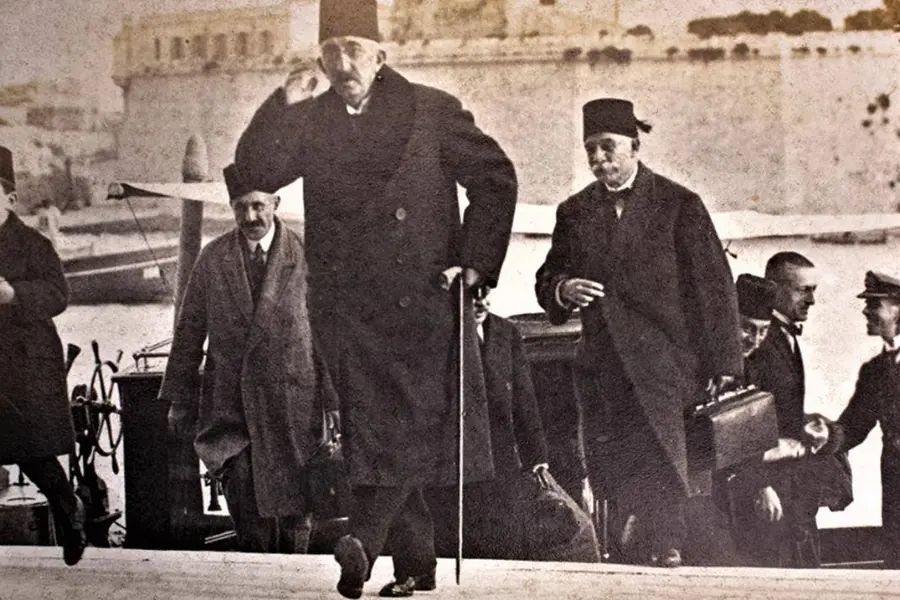
Nationalists dissolved the Istanbul government and abolished the Ottoman dynasty, leading to the departure of the last sultan, Mehmed VI, on a British battleship in October 2022
Various internal and external factors influenced the fall of the Ottoman Empire. Its involvement in World War I accelerated its decline, leading to its eventual end in 1922.
Understanding the role of the Ottoman Turks and the Ottomans also provides insight into its lasting legacy.
Factors Leading to the Fall of the Ottoman Empire
The decline of the Ottoman Empire spanned several centuries.
-
Internal factors contributing to the decline:
- Economic troubles weakened the empire’s foundation.
- Corruption undermined governance.
- Weak leadership hindered effective management.
- Changes in trade routes diminished economic power.
- Military defeats reduced control over territories.
-
External factors impacting the empire:
- European powers sought to exploit and divide the empire.
- Rising nationalism within the empire complicated the management of diverse cultures and religions.
Externally, European powers sought to exploit and divide the empire. Nationalism within its borders rose, making managing diverse cultures and religions difficult. This period, often called the Ottoman period, saw a gradual loss of lands.
Who Were the Ottoman Turks and the Ottomans?
The Ottoman Turks, founders of the Ottoman Empire, emerged in Anatolia in the late 13th century. They expanded to create an empire that bridged Europe, Asia, and Africa. They were known for their military prowess, administrative skills, and cultural achievements.
The empire reached its height under sultans such as Suleiman the Magnificent. The Ottoman Turks were key players in international politics and culture, influencing regions far beyond their borders. The Ottoman Empire remained a powerful force for centuries, shaping the Middle East and Europe.
The Ottoman Empire in World War I
World War I was a critical period for the Ottoman Empire, hastening its demise. The empire allied with the Central Powers and fought on multiple fronts. This decision led to heavy losses and further strained already limited resources.
By the war’s end, the Allies had occupied much of the Ottoman Empire’s territory. The Ottoman Empire’s WWI experience resulted in the signing of the Treaty of Sèvres, which dismantled much of what remained. Ultimately, the empire officially ended in 1922, and the Republic of Turkey replaced it.
Closing Remarks
Ottoman Empire history is a remarkable tale of rise and fall over centuries. Starting in 1299, the empire’s influence stretched across continents and cultures. It lasted over 600 years and concluded in 1922 when the Turkish Republic replaced it.
During its existence, the empire saw significant cultural advancements. It left a lasting impact on architecture, law, and art. The empire’s legacy is still evident in regions once under its rule.
Military conquests and strategic alliances played crucial roles in expanding and maintaining power. These efforts ensured their dominance over vast territories for generations.
Key Takeaways:
- Longevity: Lasted 624 years.
- Cultural Impact: Influenced architecture, law, and art.
- Final Transition: Ended in 1922 and led to the Republic of Turkey.
Understanding the Ottoman Empire’s complexities leads to a greater appreciation of historical narratives and their effects on contemporary society.
The transition to modern states like Turkey shows the empire’s lasting influence on current political and cultural landscapes.
Frequently Asked Questions
The Ottoman Empire left a significant mark on history, impacting regions like the Middle East, Eastern Europe, and North Africa. This section answers common questions about its history, influence, and legacy.
Who defeated the Ottoman Empire?
The Allied Powers defeated the Ottoman Empire during World War I. The empire officially ended after signing the Treaty of Sèvres in 1920, which led to its dissolution.
Is Ottoman Arab or Turkish?
The Ottoman Empire was primarily Turkish. It was founded by Turkish tribes and maintained a Turkish culture and language despite ruling many regions with diverse ethnic and cultural backgrounds.
What is the Ottoman Empire called today?
The Ottoman Empire, now known as the Republic of Turkey, was changed to Turkiye. Following the empire’s dissolution, the Republic of Turkey was established in 1923, with Ankara as its capital.
Why did the Ottoman Empire fall?
The Ottoman Empire fell due to internal strife, economic difficulties, and military defeats. The weakening of central governance and the impact of World War I also contributed significantly to its decline.
Where is the Ottoman family now?
Members of the former Ottoman royal family are dispersed around the world. After the abolition of the sultanate in 1922, many family members went into exile, and they primarily live in Europe and the Middle East today.
Why was the Ottoman Empire bad?
Criticism of the Ottoman Empire often focuses on issues such as authoritarian rule and the oppression of various ethnic and religious groups. Additionally, instances of economic hardship and political instability marked its later years.
What religion were the Ottomans?
The Ottomans were predominantly Muslim. The empire was an Islamic caliphate, and Islam played a significant role in its government and culture.
What was the longest-lasting empire in history?
The Roman Empire is often considered the longest-lasting empire in history. Compared to the Ottoman Empire, which existed for over 600 years, the Roman Empire spanned approximately 1,500 years in various forms.
What stopped the Ottoman Empire?
The Allied Powers and internal pressures contributed to halting the Ottoman Empire. The culmination of these factors, particularly during and after World War I, led to its eventual collapse.
Why is it called an Ottoman?
The term “Ottoman” for furniture comes from the empire’s influence on European decor. The name reflects the style of furniture that became popular in Europe, inspired by designs from the Ottoman region.
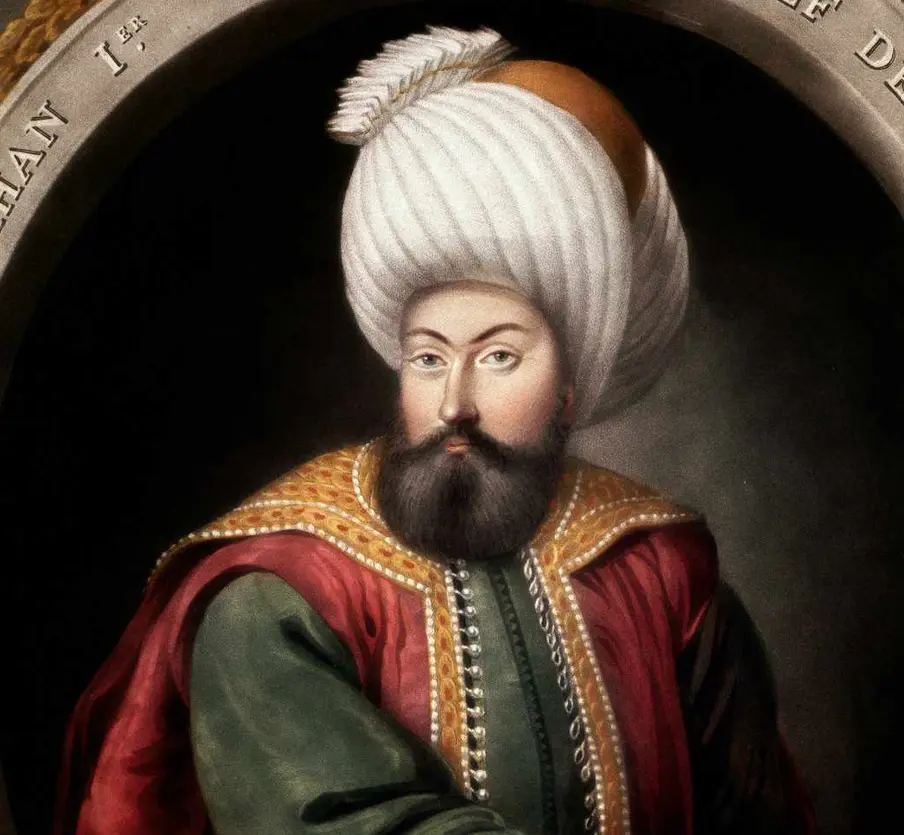
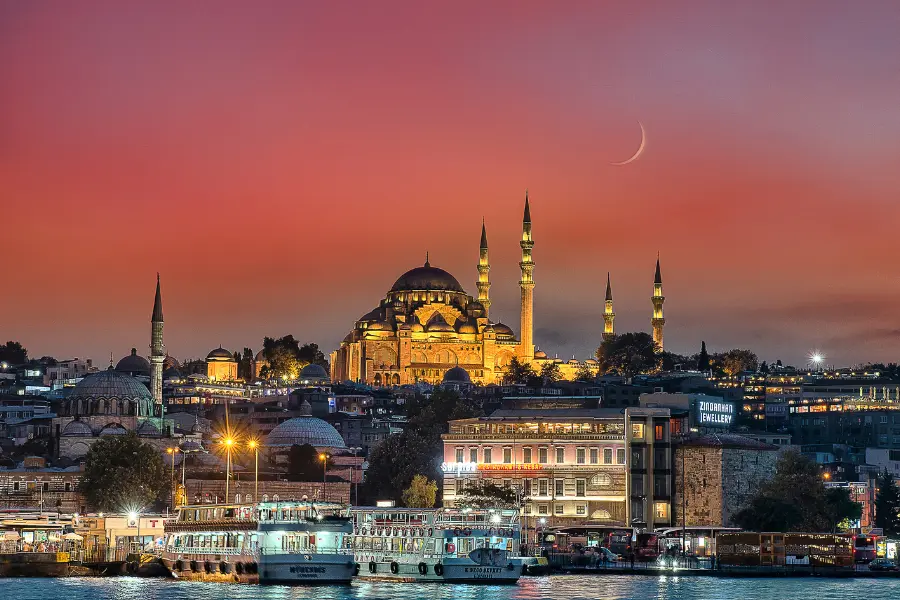
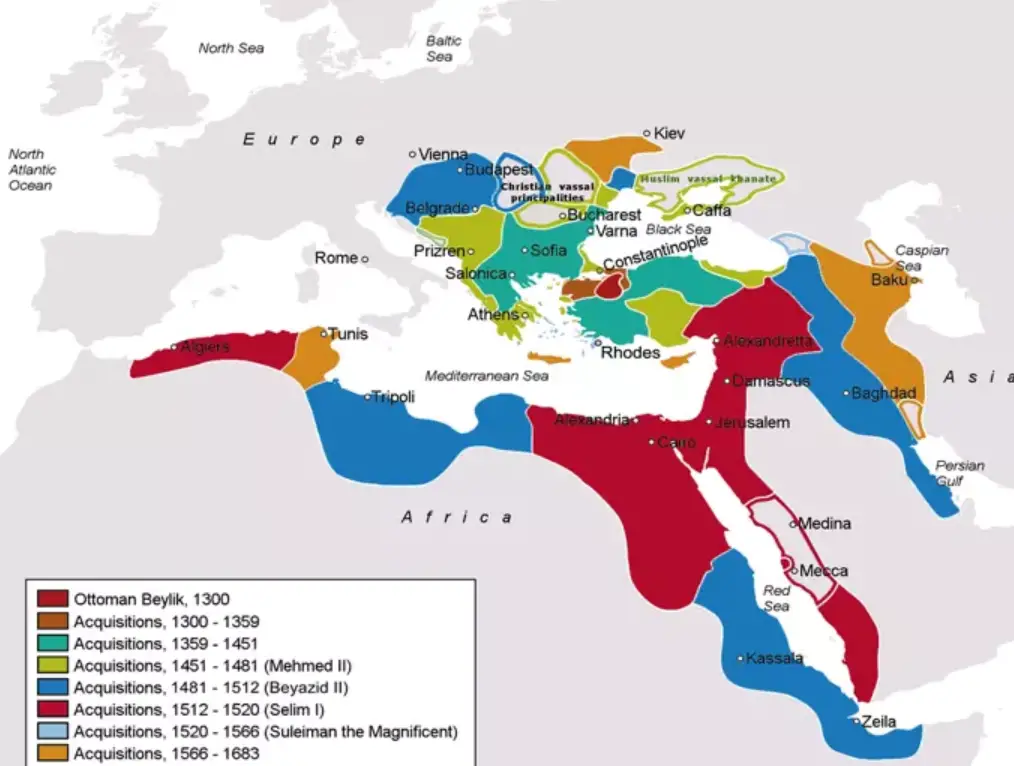
 Leonardo Bianchi,
the creator of Leonardo da Vinci's Inventions.
Thank you for visiting
Leonardo Bianchi,
the creator of Leonardo da Vinci's Inventions.
Thank you for visiting